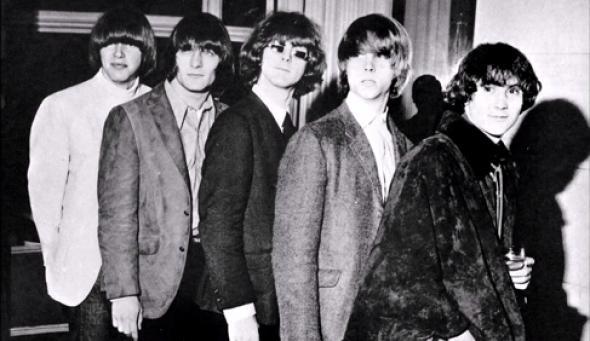See other Retro 50s 60s Articles
Title: These Isolated Vocal Tracks Highlight the Unique Brilliance of the Byrds’ Harmonies
Source:
Slate
URL Source: https://slate.com/culture/2015/06/t ... own-to-their-vocals-video.html
Published: Jun 21, 2015
Author: Sharan Shetty
Post Date: 2020-01-04 21:50:43 by Bill D Berger
Keywords: None
Views: 140
The Byrds. Still from YouTube Despite basically inventing the folk-rock genre, the Byrds never quite managed to sneak into the sacred cultural space occupied by the Beatles, Beach Boys, and Rolling Stones. But two isolated vocal tracks, spotted this week by the folks at Dangerous Minds, offer some subtle insight into what set the band apart from its peers. The tracks are “Mr. Tambourine Man” and “Turn! Turn! Turn!,” two ubiquitous folk covers that happen to be the group’s only No. 1 hits. Stripped of frontman Roger McGuinn’s jangly, 12-string guitar, the songs become sublime a cappella, with the vocal stylings of McGuinn, David Crosby, and Gene Clark aligning in perfect harmony. Those harmonies, though, deviate from the sound of similar bands. Here’s McGuinn, in Canyon of Dreams: The Magic and the Music of Laurel Canyon, detailing the unique structure of the Byrds’ music: This two-part style distinguished the Byrds’ music from that of the Beatles, who favored three-part harmonies, and the Beach Boys, who used all five band members to animate Brian Wilson’s complex arrangements. Acts like the Everly Brothers also used dual harmonies, but, as Peter Lavezzoli notes in Dawn of Indian Music in the West, “Crosby took the two-part approach a step further,” using his knowledge of jazz modes to “move freely between a perfect fifth, flatted fifth, third, or seventh” as McGuinn and Clark sang in tandem. The result is a sound that can flit between angelic and eerie in an instant. Via Dangerous Minds.
“We sang together well…I give the credit to Crosby. He was brilliant at devising these harmony parts that were not strict third, fourth, or fifth improvisational combinations of the three. That’s what makes the Byrds’ harmonies. Most people think it’s a three-part harmony, and it’s a two-part harmony. Very seldom was there a third part on our harmonies.”
Post Comment Private Reply Ignore Thread